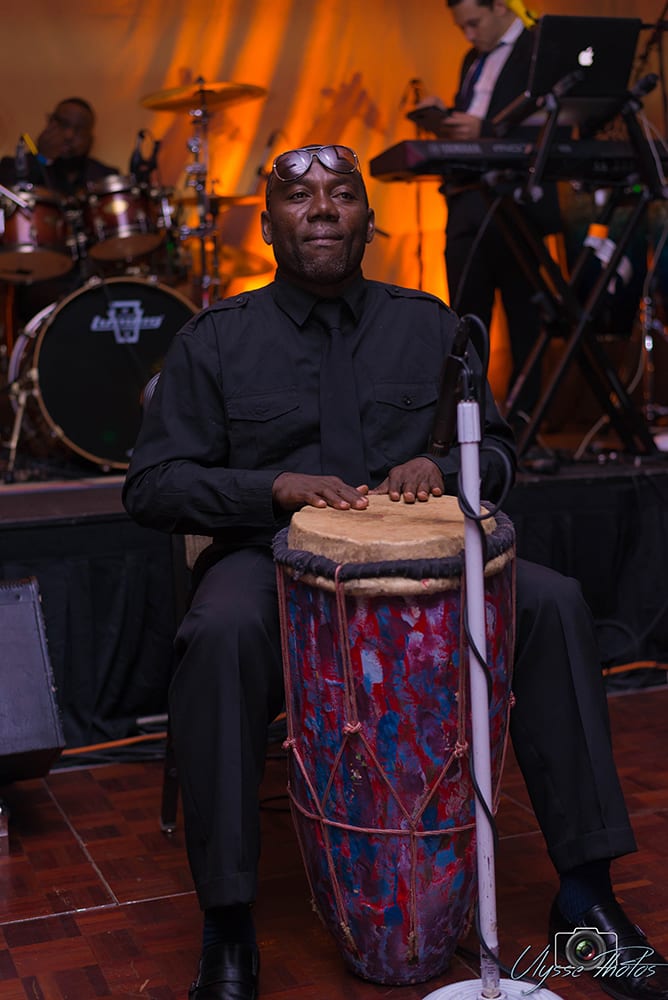Haitian music has been influenced by many different sources over the last 400 years. The indigenous Caribbean people called “Taino” had their own style of music. Although most of the Taino were killed by Spanish slaveowners, there was some influence of their music passed down to the eventual African slaves who were brought to the island years later.
Modern Haitian music has Spanish, French and African elements and rhythms to it. Haiti does have unique music styles found nowhere else, such as twoubadou music, hip hop creole, rara parading music, meringue dance music, and Compas dance music. Much of this music is heard during festivals and celebrations, such as Independence Day and New Year’s Day on January 1st of each year.
In 1937, a famous Haitian jazz musician named Jazz Guignard became the first person to record music in Haiti. Although it was not commercially sold music, it still helped introduce Haitian music to countries outside of Haiti. Perhaps the most famous Haitian musician of modern times is Wyclef Jean. He is a rapper who immigrated to the United States as a kid and rose to fame in New Jersey.
As for traditional Haitian music, the influence of African slaves and European colonists had the most profound effect on it. The two main forms of Haitian music are folk music and popular music. Let’s discuss the different music styles of each category below.
Folk Music
Folk music is a type of music which originates from a particular culture or society. Haitian folk music is obviously different than folk music from other countries. The three main Haitian folk music styles are Meringue, Rara, and Twoubadou.
Meringue uses the sounds and rhythms of the guitar in its music. Other acoustic instruments may be used as well, including the lute, piano, and a variety of horns and string instruments. Do not confuse meringue with a similar style of music from the Dominican Republic called merengue. The difference is that merengue uses the accordion as its base instrument rather than the guitar.
Rara is Haitian festival music that is performed on the streets during major holidays, especially throughout Easter Week. There will be parades with vehicles that have musicians playing their cylindrical bamboo trumpets, drums, guiras, guiros, and maracas. This combination of musical instruments makes up the unique style of rara music that locals love so much.
If anyone sings along with the instrumentation, they usually sing in Haitian Creole because it is the most commonly spoken language in Haiti. Anyone who sings in French during a Haitian holiday would likely get scolded because these celebrations are supposed to be about honoring their African ancestry. French is a reminder of colonialism and the slaveowners who tortured their ancestors, so they certainly don’t want to celebrate that.
Haitian Twoubadou is one of the most renowned types of Haitian folk music. It was developed in the early 20th century as a combination of meringue and Cuban guajiro. The performer will usually play their guitar while singing a song about love. The lyrics are usually suggestive, with a combination of humor and bitterness together in them. Aside from the guitar, some of the other typical instruments used in Haitian Twoubadou include the tanbou, accordion, bass, maracas, banza, and lamellophone.
Popular Music
During the 1950s, a Haitian saxophonist and guitar player named Nemours Jean-Baptiste created a unique version of meringue called Compas. It is a style of dance music which quickly spread outside of Haiti to North America, South America, Canada, France, the Caribbean and Africa. The word “Compas” comes from the Spanish word that means “rhythm.” It is the basis for a lot of the Caribbean music created and played throughout the Antilles region. The Haitian Creole language spells Compas as “Konpa,” but it is pronounced like “Kompa.”
Mini-jazz was derived from Haitian Compas during the 1960s. Haitian rock bands experimented with using two guitars, a drum-conga-cowbell and one bass with an alto saxophone. You’d often hear these bands playing the music in neighborhoods throughout the capital city of Port-au-Prince.
The Compas band “Shleu-Shleu” is credited for starting the Mini-jazz trend in the 1960s. It was popular music that popularized the Haitian middle-class and gave them a bigger voice than they ever had before. The trend of mini-jazz continued into the 1970s after several mini-jazz groups were formed, including Volo Volo de Boston and Tabou Combo.
When rock n roll music was rising in popularity during the 1960s, Haitian rock was also formed too. Haitian rock bands were known as yeye bands, but they didn’t last very long because Compas started to influence it. Haitian rock still exists today, but it is considered an alternative form of rock music because of its Caribbean influence.

The Haitian Carnival
If you are a tourist who wants to experience Haitian music firsthand, then make plans to visit Haiti during January and February. The Haitian Carnival is a celebration of various Christian and Roman Catholic traditions, such as the Mardi Gras and Ash Wednesday. Make sure you visit Port-au-Prince because that is where all the major parades, dances and music will be performed.
Another great thing about the Haitian Carnival is that it gives novice musicians in Haiti a chance to showcase their talents in front of large crowds. It is the only real way for any Haitian musician to demonstrate their skills to a large gathering of people. Since music concerts are not too common in the country, the holidays are the only time to put on a real musical show.

